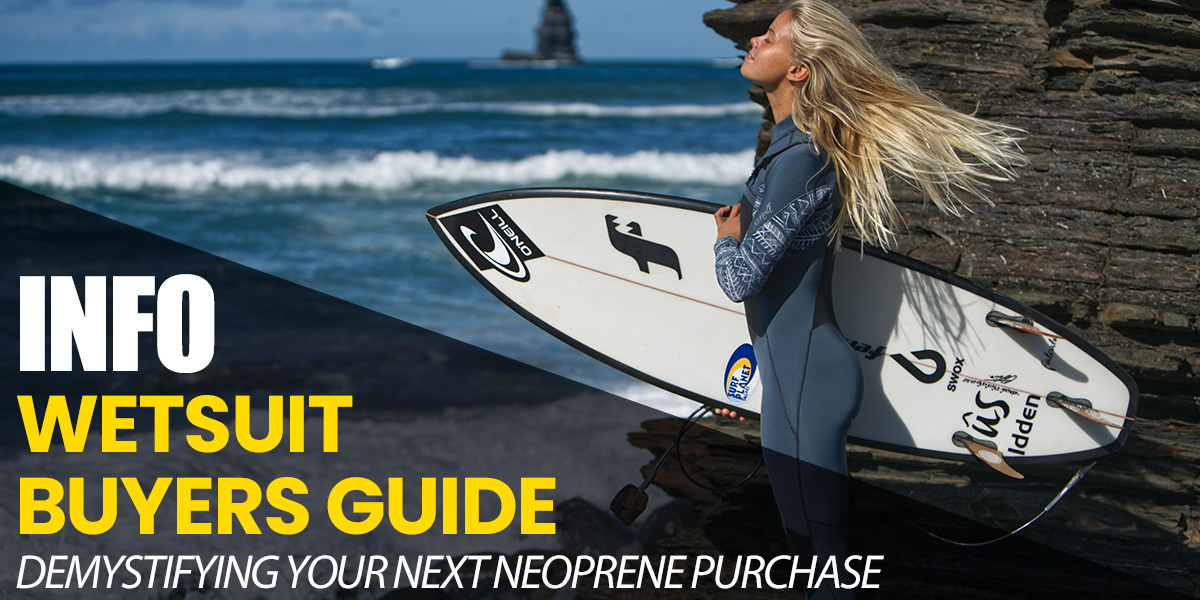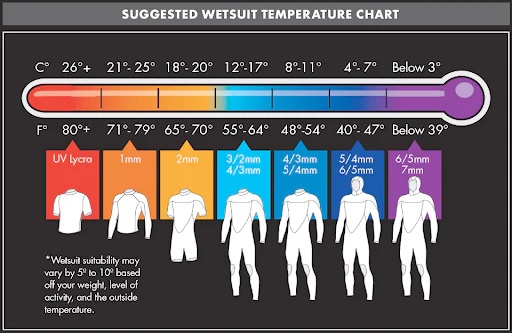Welcome to the wonderful world of the wetsuit. You’re not alone in finding the vast ranges somewhat overwhelming, so this guide aims to simplify key terminology and make future purchases stress free. There is a great deal to know and I will aim to address the topic in order of importance.
Thickness
The crucial one. The neoprene thickness determines your warmth in the water and is the first thing to consider. Almost all wetsuits are made of panels of different thicknesses and you will see each model has two, or even three, numbers to denote the thermal value. The most common examples are 3/2, 4/3 and 5/4, relating to the different thicknesses in millimetres. The first number references the material used in the majority of panels, while the latter reflects the remainder. As you would expect, chunky neoprene centres around your core to boost warmth. In contrast, the most flexible thinner panels are in the arms and shoulders to maximise freedom of movement.
One of the most challenging aspects when offering advice on wetsuits is the question of how thickness relates to air or water temperatures. It is not that simple I’m afraid! There are many factors affecting this, which include:
- How each individual feels the cold. You’ll likely know if you are a warm or cold person and this should be factored into the decision making.
- The type of sport you participate in. When we think of wetsuits it is generally a watersport with total immersion that springs to mind (i.e. surfing, swimming etc). However, many of our customers enjoy sports where more time is spent out of the water (e.g. SUP, kayak, sailing etc.) This group might prefer to choose a slightly thinner grade suit and thus benefit from the additional flexibility and comfort.
Certain brands provide guides that attempt to calibrate neoprene thickness to water temperature. The O’Neill version below is a fantastic example. However, you will see the difficulty given that even such an established brand feels the need to include a 5-10 degree error margin!
As this guide is meant to provide answers rather than create more questions I recommend you follow this general rule:
<2mm - These are likely to be shorty suits, which are ideal for summer use.
3/2 – This configuration is ideal for warmer months, perhaps from June until October. You might extend this period for non immersion sports (e.g. SUP) and especially when combined with a wind stopper cagoule jacket.
4/3 – The hybrid. A useful thickness for anyone enjoying an immersion sport from spring to autumn.
5/4 – The 5mm suit was previously termed a winter weight wetsuit. However, this is somewhat misleading and might now be best viewed as a year round option. There will be the odd day when you need a thermal underlayer to boost comfort. Similarly, a hot summer's afternoon will necessitate a move to a shorty or similar. Ultimately, every product is a balance but a 5/4 is a fantastic choice if you want to extend the season and enjoy your sport in colder temperatures.
6/5 – The choice of the hardcore winter warrior. 6mm suits are almost always an additional suit within the wetsuit quiver and generally have an integrated hood. These are popular with surfers and wind sport enthusiasts looking to get on the water when most would stay at home with the fire on!
Seams
Perhaps the most underappreciated aspect of wetsuit technology but in my view one of the most important. Wetsuits are always made of multiple panels and the choice of how to join these has massive implications on wetsuit price, durability and performance. The traditional methods are as follows:
Flatlock
The simple and inexpensive choice. This type of seam is common on entry level suits and simply involves stitching through the neoprene fabric as you might with a home sewing machine. It maximises the flexibility but comes with one downside. The neoprene itself is a waterproof fabric and by applying a flatlock seam the manufacturer has essentially made lots of tiny holes that allow water in. This is not so much of an issue for summer thickness suits but in colder conditions perhaps best avoided. Although the theory of wetsuits is that they hold a layer of water, the reality is that the less cold water ingress the better!
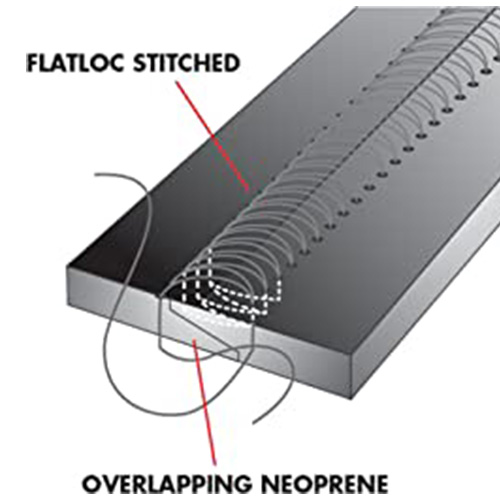
Glued and Blindstitched (GBS)
Looking at a suit there are only subtle differences between flatlock and GBS seams. However, the performance improvement you will feel be selecting a glued seam is massive. Here the panels are glued together and then a blindstitch is applied for durability. The beauty of a blindstitch is that the needle does not fully penetrate the fabric. As a result, GBS seams are essentially waterproof and keep cold water on the outside. You can normally tell a wetsuit that features GBS seams as the stitched seam shows on the outside but not internally.
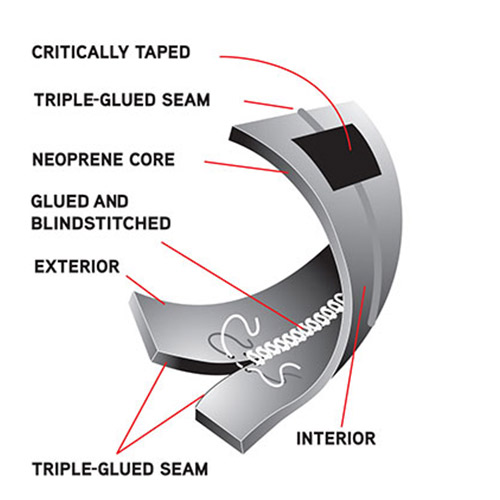
GBS + Internal tape
This style of seam is becoming increasingly popular. It includes everything from our GBS description but now features an additional waterproof stretch tape glued on the inside of the suit. In doing so durability is improved and thus this style of seam extends the lifespan of the wetsuit when compared with GBS.
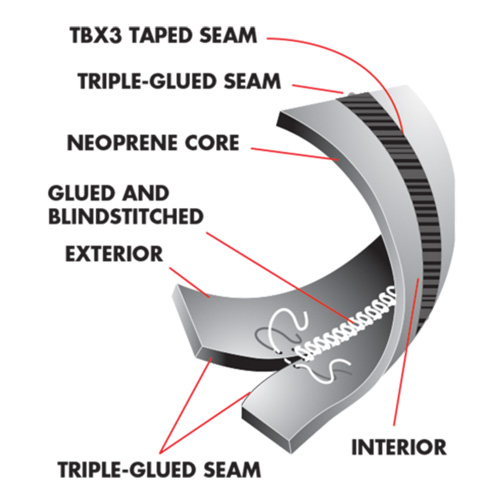
Liquid Taped Seams
This style of seam has traditionally been seen as the premium choice, creating the ultimate barrier to cold water entry. The seam is glued and blindstitched, with a specialist liquid tape then applied to either the outside or inside face. This is an extremely expensive and labour intensive method and thus fewer brands are using this technology, generally choosing GBS + internal tape in preference.
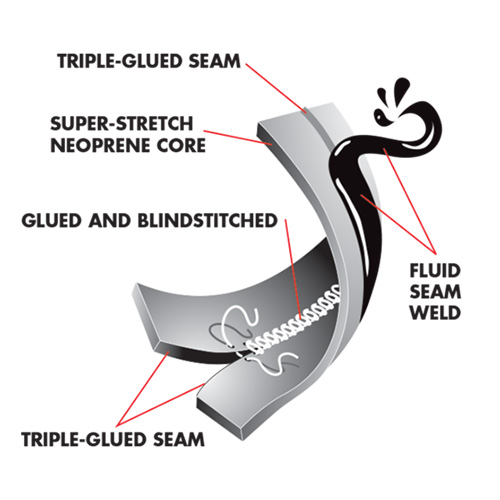
Fabric
Not all neoprene fabrics are of equal quality. Whether petroleum based, limestone derived, or yulex, you will find huge variances in the flexibility and feel of the material. As a rule, the stretch and softness of the material improves with increasing budget. This is crucial for any sport needing freedom of movement. After all, you don’t want to end a session early due to fatigue caused by fighting with the wetsuit.
Another factor to consider is the lining material. To give a little background, neoprene itself was developed in 1931 by Dupont. The final product is actually a thick ‘loaf’, which is then sliced thinly to meet the requirements of manufacturers. Its insulating characteristics are unrivaled and hence its popularity as a wetsuit fabric. However, once sliced the neoprene needs to be lined and this is generally done with nylon. The benefit is a massive improvement in durability and you will find most wetsuits are nylon lined on the both the inside and outside. Certain panels, namely the best and lower back are sometimes left without nylon lining. The reason for this is to improve wind chill resistance and overall warmth. You might ask why the entire outside of the suit is not left unlined as surely this would be warmer and less expensive. The reason for the nylon lining is durability and abrasion resistance, hence why only low risk areas tend to be left without it. You will sometimes see these areas referred to as ‘single lined’ or ‘smooth skin’.
Entry Style
Wetsuits can come in a range of entry styles. By this I mean how you get into and out of the suit. Each has pros and cons as follows:
Vertical front zip
Arguably and easiest entry method and now generally only seen on sailing or long johns, the latter referring to sleeveless full suits. While being easy to put on this style results in a great deal of cold water flush, hence being rare.
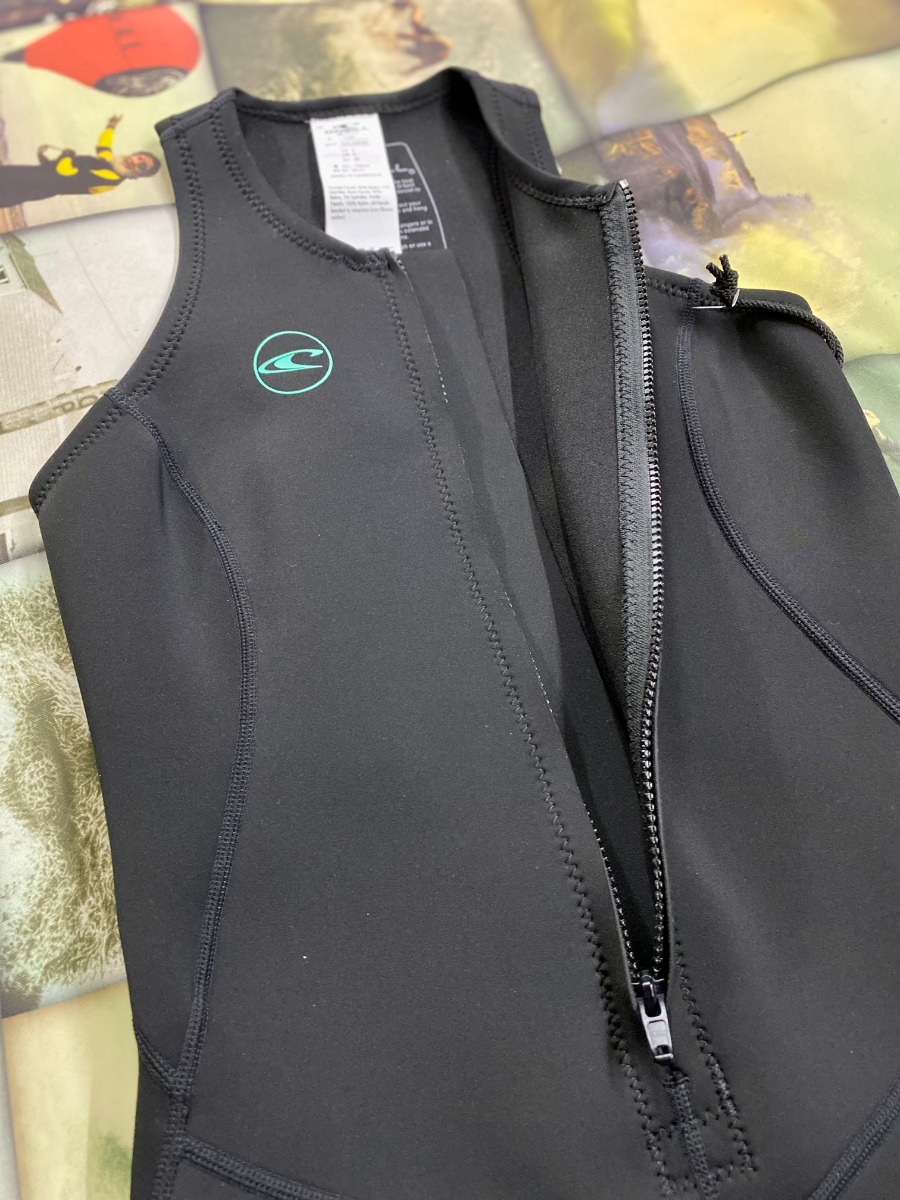
Vertical back zip
The most common wetsuit entry system. A back zip ensures you can get in and out of the suit easily. Pulling the zip towards the neck seals the suit and you have a long fabric tab, enabling you to do this without assistance. With increasing budget zips become stiffer. This might seem nonsensical but there is good reason. A zip which is stiffer to close will allow less cold water to enter the suit.
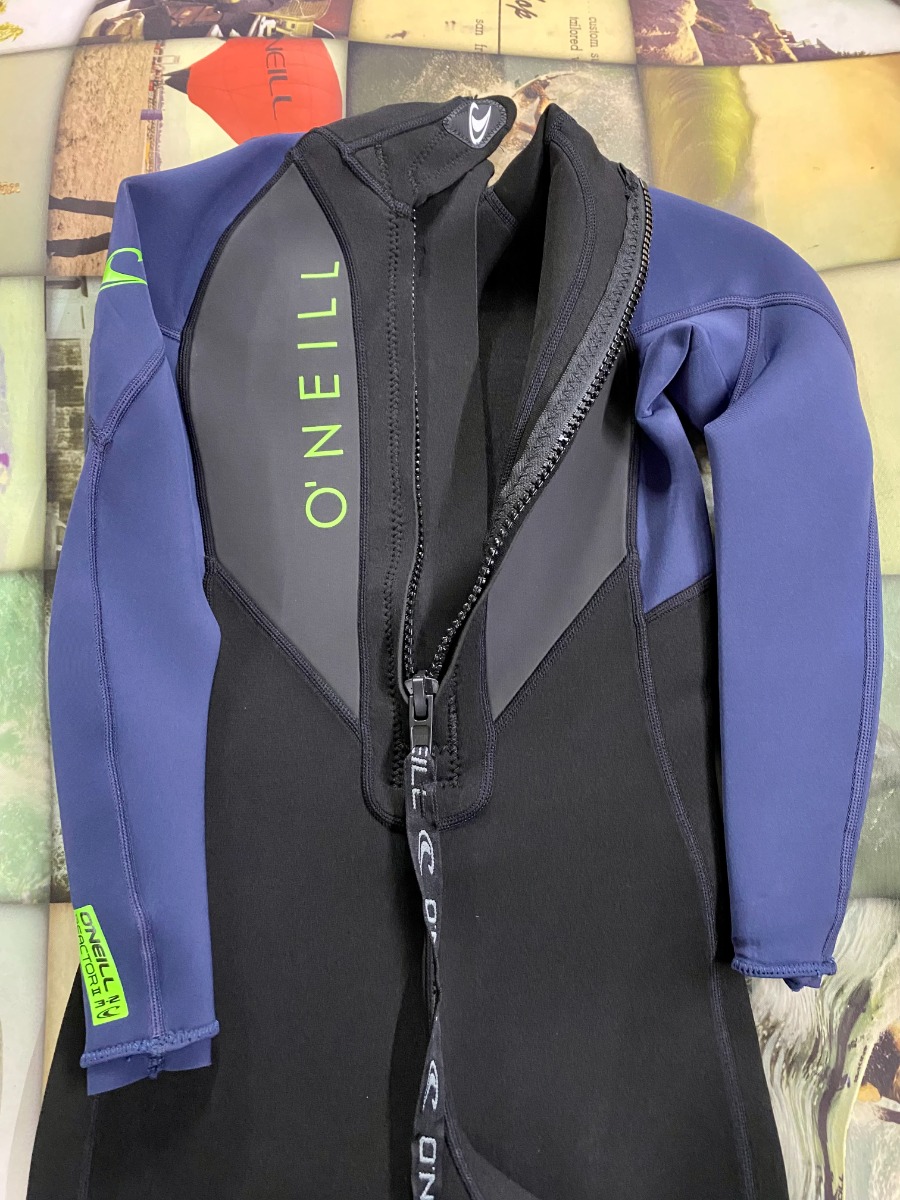
Should you want to further increase the warmth of your wetsuit then please look to back entry systems that include a neoprene baffle. This is essentially neoprene sheet that sits between the zip and wetsuit wearer. Any cold water entering through the zip then hits this waterproof panel and is routed out of the suit before getting to the warm skin. Nobody enjoys the sensation of a cold trickle!
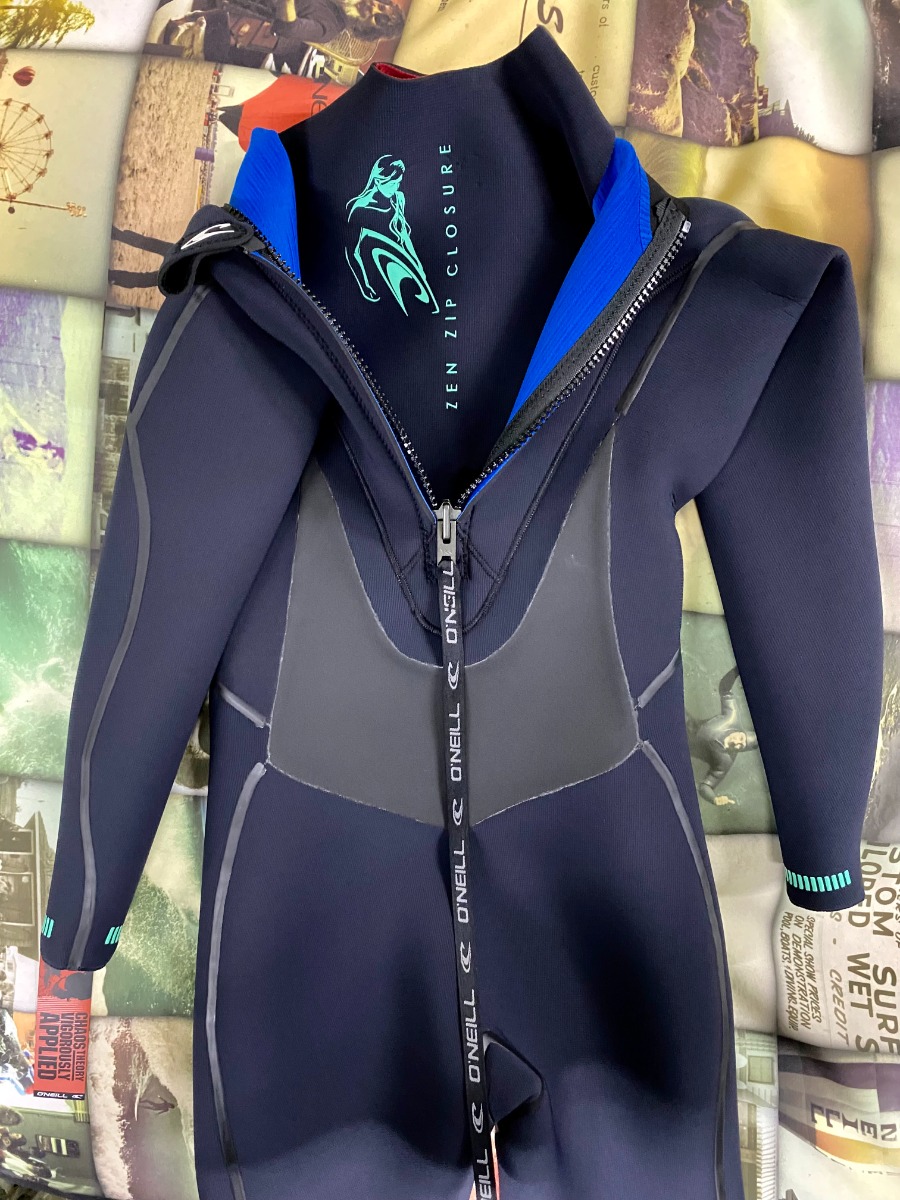
Horizontal front zip
This zip style represents the largest progression in wetsuits over the past decade and comes with three major positives:
- The removal of the vertical back zip means greater flexibility in the rear panel and an overall improvement in freedom of movement for the user.
- With a front entry suit you have a circular and uninterrupted neck seal. This provides less opportunity for cold water flush.
- As the closure is in front of your face, you are able to more quickly get zipped up and in the water.
If you have not tried a front zip suit of this style out staff would highly recommend it. They are perhaps best for those looking for performance and flexibility. If ease of entry is of greater importance to you then it is likely best to stick with a traditional vertical back zip. Ultimately horizontal front entry style is a wriggle and takes some practice.

Zipless
Taking things to the extreme! Although you might not believe it some wetsuits are an evolutiuon of the horizontal front zip style but with the zipper removed. The closure is reliant on the elastic nature of the neoprene. Without this you would not be able to get it on! The result is absolute freedom and as such these suits are reserved for anyone performing their sport at the top level, where minute improvements are significant. For weekend warriors I would suggest sticking with zipped wetsuits, which tend to benefit from improved durability.
Thermal Linings
One of the final things to consider is whether you would like an integrated thermal lining in your new wetsuit. As the name suggests this feature improves the thermal performance of the suit, yet will always have a small impact on its flexibility. You can choose the suit model to suit your preference, whether this is no lining, chest and back only, or full body and legs. Bear in mind that it is always possible to add a separate thermal top and/or short when conditions dictate. In our opinion these surpass integrated linings in terms of performance. However, all brands are working hard to ensure suits are quick to dry and maintain a flexibile feel even with thermal material that is built into their suits, so don’t have any concerns to go down this route. Ultimately, you are wearing the suit to stay warm, extending both your session time and season length. Anything that achieves this will boost your progression and enjoyment of the sport so our staff always advocate going for a thicker suit if you are unsure.
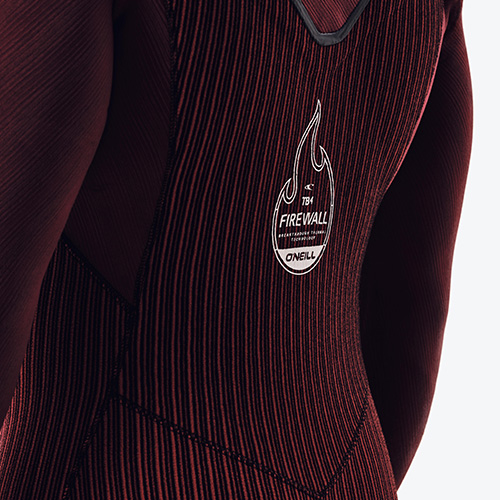
Hopefully this guide has covered some of the main points for you. Wetsuit fitting is equally important and thus visiting the store is a great opportunity to gain advice. For those more distant, please have confidence in the expertise we have from thousands of customer fittings. Based on a description of your build and intended use it is always possible to get you in the correct suit without the need for frustrating returns.
George















